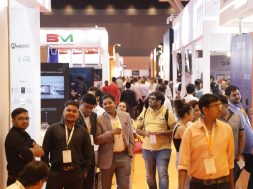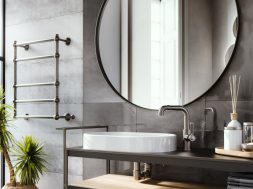Green by Design

In a conversation with Vikas Bhadra, Vo Trong Nghia, Principal Architect of Vietnam based VTN Architects says that his foremost priority lies in the fact that whatever he and his firm create, is in harmony with the nature that surrounds it.
“Post my graduation I was very quick to set up my own firm and much of it was driven by the Japanese work culture. In Japan it is quite normal for an architect to start a meeting at midnight and I as a person cannot stand sleep deprivation. So along with other factors this also encouraged me to start my own practice. From two to three people back then to working with forty architects in my team today it has been quite a fascinating journey.”
The conversation with Vo Trong Nghia, Principal Architect of Vietnam based VTN (Vo Trong Nghia) Architectshas just begun and it is quite clear that unlike other architects globally Vo Trong Nghia prefers to have a proper balance between work and life. Unlike the ambitious professionals who would prefer to slog it out at times at the cost of their health and well-being, Nghia’s approach is sensible as also in sync with nature. VTN Architects is known globally for its projects most of which are designed using local and sustainable materials.
For most urban dwellers in India as also abroad the idea of a house is rooted in cement and concrete. Even when we envision office spaces and retail spaces the visualization is limited to tall buildings with glass facades. Though this tendency is wide spread there are a few architects who have chosen to walk down the road less travelled and come up with their own unique designs. They design projects in which the habitat and its inhabitants are closely related to the surrounding nature. VTN is one such architectural firm which through its creations has proved that whilst embracing modern day materials as well, they are not far removed from traditional architecture which epitomizes a green and sustainable built environment.
Much of this reflects in VTNs approach towards architecture Nghia says “When we take up a project, our first priority is to look at the climate of the space and ensure that whatever we create as architects, is in harmony with the nature that surrounds it. We also give a lot of thought to how people will retain their connection with nature in the view of what is being designed. In doing so we end up deriving new architectural syntax which gets embedded in the culture of the space.”
Architects at times are known to take a cue from traditional architecture when they design especially for different locations. Nghia points out though that is a good thing to do, creating a modern architectural lingo is not a bad thing to do after a thorough consideration has been given to how to harmonize the architecture to the nature of the space. “When Louis Kahn designed spaces in India, he crafted a new language altogether but it was much appreciated because it resonated well with the climate of the space. One learning I derive from such anecdotes is that for us as architects it is necessary for us to also use the material in the proper context too keeping in mind the climate of the space.”
VTN Architects is credited with designing numerous projects which serve as a testimony to green and sustainable architecture and construction. One of the first projects which got VTN tremendous global attention was wNw Café located in Binh Duong Province, Vietnam. The whole building was constructed using 7,000 bamboo elements which were treated using traditional Vietnamese methods. The bamboo structure has no concrete columns, instead it used wire bracing supports. A V-shaped roof was designed to create a symbiosis with the surrounding trees and generate an open space with breathtaking views. The use of such a traditional material leads to the creation of an architectural space which is both traditional and yet accessible to a modern lifestyle. Consequently, the cost of construction was much lower than conventional structures and thanks to traditional treating methods the building is sustainable yet functional with the total cost being a mere 65,000 € for an area of 1,403 sq m (An unbelievable 45 €/sq m).
But not every project across the world is being designed this way. At a time when the use of man-made materials is prevalent in architecture, invoking the quotient of sustainability in modern day projects requires some brainstorming “Yes, the use of man-made materials is prevalent in architecture and in may countries where manpower is unavailable or costly, factory made products are utilized to design projects. To be honest it is quite difficult to completely reverse this trend but as an architect the best we can do is to use them in a right way. To elucidate further, I want to point out that even glass which is a modern-day material can be utilized to design green and sustainable spaces.”
“It is essential,” believes Nghia“ for an architect to understand the importance of spatial quality but many tend to ignore this important fact and instead the entire focus is on shape and the size. So much so more that the principles of sustainable architecture are ignored, alas such structures cannot last longer and the spatial qualities of such spaces are also not up to the mark. Such structure may look very alluring on Facebook, TikTok or Instagram but in real life their lifespan is quite limited.”
A man is know by his deeds at the end of the day and the same is true for every professional as well. In this regard VTN will always be known as a firm which in its own unique way has always tried to create a symbiosis between nature and its creations to make our habitats greener and sustainable.
Cookie Consent
We use cookies to personalize your experience. By continuing to visit this website you agree to our Terms & Conditions, Privacy Policy and Cookie Policy.









